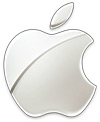![]() By now, you may have heard that Microsoft has decided to pull Drive Extender from it’s upcoming Windows Home Server V2 (codenamed ‘Vail’). Keep in mind that we are eight months into the beta of Vail. This is not some alpha product and this is not the start of the beta cycle. While WHS V2 was supposed to be out this year, that’s not going to happen at this point, but it’s still significant that we are eight months into the beta, and Microsoft is deciding to remove a key component.
By now, you may have heard that Microsoft has decided to pull Drive Extender from it’s upcoming Windows Home Server V2 (codenamed ‘Vail’). Keep in mind that we are eight months into the beta of Vail. This is not some alpha product and this is not the start of the beta cycle. While WHS V2 was supposed to be out this year, that’s not going to happen at this point, but it’s still significant that we are eight months into the beta, and Microsoft is deciding to remove a key component.
Windows Home Server has a very dedicated following, and manufacturers such as Acer and HP have put a lot of effort and resources into supporting this market with appropriate hardware. Windows Home Server is aptly named – it’s a product targeted towards consumers, and it allows you to put together a small home server using either your own components or buying servers such as HP’s MediaSmart line, that allow you to add up to 4 hard drives. What attracts so many to Drive Extender is that it allows you to see all of those drives as one drive or one storage pool, while duplicating your files and providing some redundancy/backup capabilities that you wouldn’t have with just a single backup or a single drive (such as a USB drive). It also allows you to grow your storage as you need to. One of the really nice things, in addition to not losing data if one disk goes bad, is the ability to pull any of the disks out and read them in another system. It should be noted that that ability unfortunately was going to be removed with Vail, due to changes with Drive Extender, however the changes that necessitate the removal of that ability might have offset that decision. DE was going to become more robust with Vail.
With Windows Home Server, it’s easy to back up your laptops or netbooks or PCs to a central location, as well as provide an easy way to share files between systems. For those who make frequent use of laptops/netbooks, it is very handy to have a place to back your system up to over the network, and it provided some redundancy since the data was duplicated across two drives.
While there are other features that make Windows Home Server attractive, Drive Extender was a major selling point to many people – you didn’t have to be a server expert to put together a large mass storage system to back up your media, your laptops, etc. and it could easily be expanded in the future as you needed more space. Given the high resolution digital cameras and the move to HD video in the consumer market these days, space was becoming a lot more important than in times past. All of it was “out of sight, out of mind” so to speak – you didn’t have to be an expert to setup WHS, expand the storage, and make sure everything was backed up. While WHS had a rough start, it matured quickly into a great solution to a problem that wasn’t being adequately addressed in the past.
I’ve had a few days to digest the news, and it still leaves a bad taste in my mouth. After giving up on a similar solution from Apple, WHS was very attractive to me, and HP even supported Apple’s Time Machine solution, which was the best of both worlds – backing up Macs and Windows systems. I’ve used WHS in the past and currently have a WHS system I built that I’m using, but was looking forward to seeing what happened with V2/Vail and perhaps buying a pre-built WHS system, probably from HP due to the Time Machine support.

 Apple Insider
Apple Insider